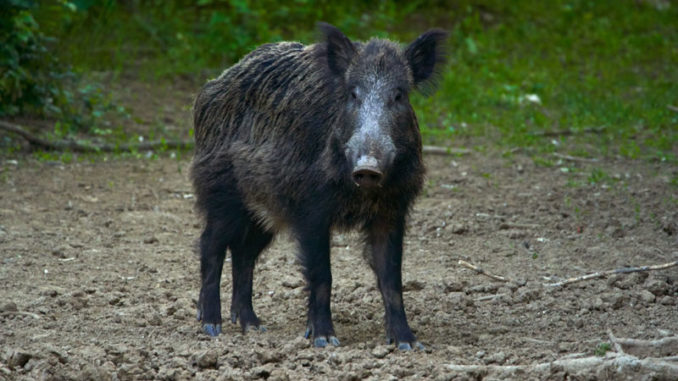
Hunting feral pigs is fun, but they destroy outdoor habitat
Wild hogs (Sus scrofa) are abundant throughout the southeastern U.S., having first been introduced by Spanish explorers in the 1500s. In more recent years, the population of these animals has exploded, due in part to the illegal transportation of them by folks wanting opportunities to hunt swine without traveling long distances.
While these feral pigs do offer an extension to big game hunting seasons, thanks to liberal regulations allowing year-round hunting for hogs (and even at night with proper permits), they also do a lot of damage to the areas they inhabit.
Wild hogs are among the most reproductively efficient breeders on earth, and can thrive in most any environment.
According to wildlife biologists, hunters would need to kill nearly 3/4 of the population of wild hogs just to keep their numbers from growing.
The good news is, hogs are fun to hunt and their meat provides lean, tasty meals.
Many hunters utilize deer stands to hunt wild pigs. Others pursue them with dogs that are trained to bay the animals while waiting for the hunters to dispatch them, either with a knife or a firearm.
Trapping
Hunting hogs with firearms is only somewhat effective. Trapping them is a much more reliable way of thinning out local populations, as entire herds of hogs can be caught and killed through this method in a short period of time.
Some hog traps are basically small pens that are constructed on site, then baited with corn or other food. As hogs enter the trap, the door closes behind them, but still allows other hogs to push their way through, only to be trapped as well.
Diseases
Wild hogs can carry numerous diseases that can be passed to humans through cuts and scratches in the skin, so hunters should always wear rubber gloves when handling harvested animals. Some even wear rubber gloves when cooking the meat.
No genetic differences exist between wild hogs and domestic hogs. They have slightly different physical features, but domestic hogs will develop those exact same features, including long tusks, longer snouts and thicker hair of wild hogs in a matter of months if left in the wild. They will also become much more aggressive after competing with other animals for food and other resources.
The post “Species Spotlight: Wild hogs” first appeared on MS-Sportsman.com.


